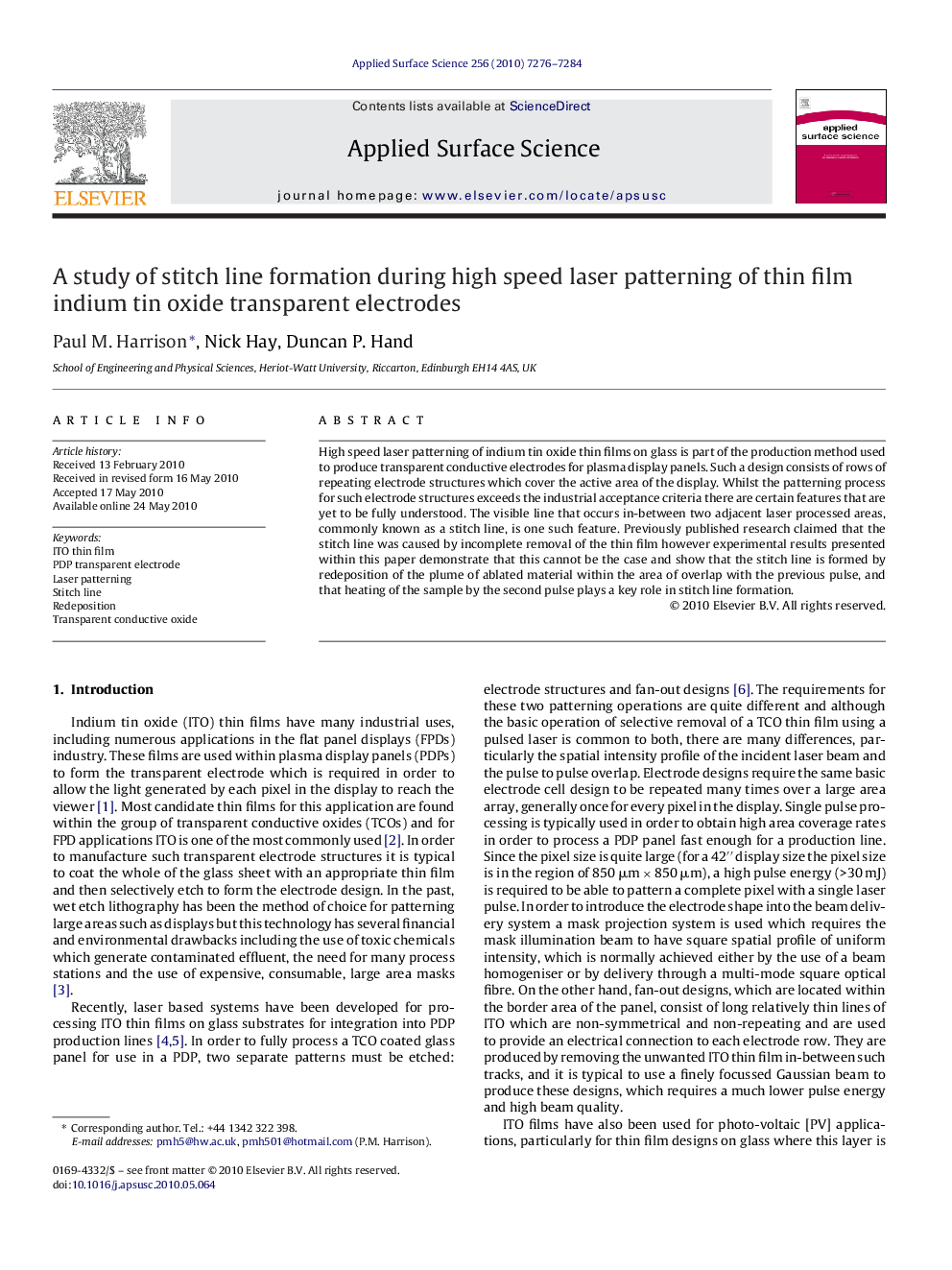| Article ID | Journal | Published Year | Pages | File Type |
|---|---|---|---|---|
| 5357319 | Applied Surface Science | 2010 | 9 Pages |
Abstract
High speed laser patterning of indium tin oxide thin films on glass is part of the production method used to produce transparent conductive electrodes for plasma display panels. Such a design consists of rows of repeating electrode structures which cover the active area of the display. Whilst the patterning process for such electrode structures exceeds the industrial acceptance criteria there are certain features that are yet to be fully understood. The visible line that occurs in-between two adjacent laser processed areas, commonly known as a stitch line, is one such feature. Previously published research claimed that the stitch line was caused by incomplete removal of the thin film however experimental results presented within this paper demonstrate that this cannot be the case and show that the stitch line is formed by redeposition of the plume of ablated material within the area of overlap with the previous pulse, and that heating of the sample by the second pulse plays a key role in stitch line formation.
Related Topics
Physical Sciences and Engineering
Chemistry
Physical and Theoretical Chemistry
Authors
Paul M. Harrison, Nick Hay, Duncan P. Hand,
